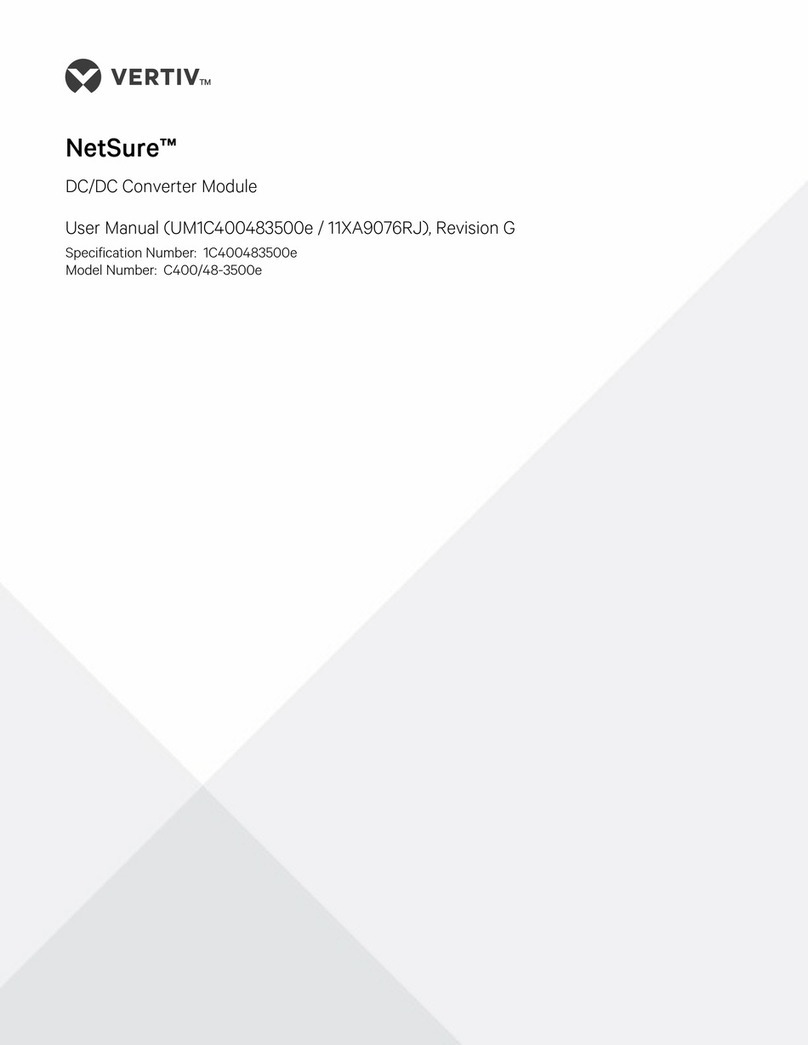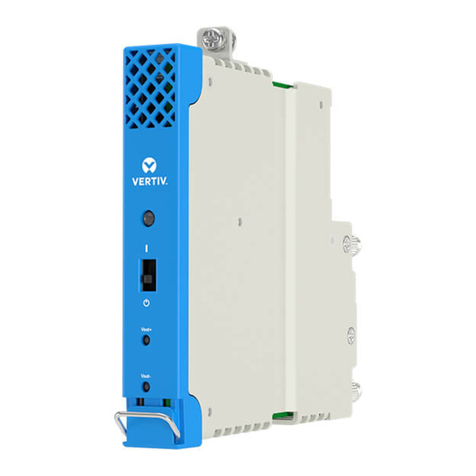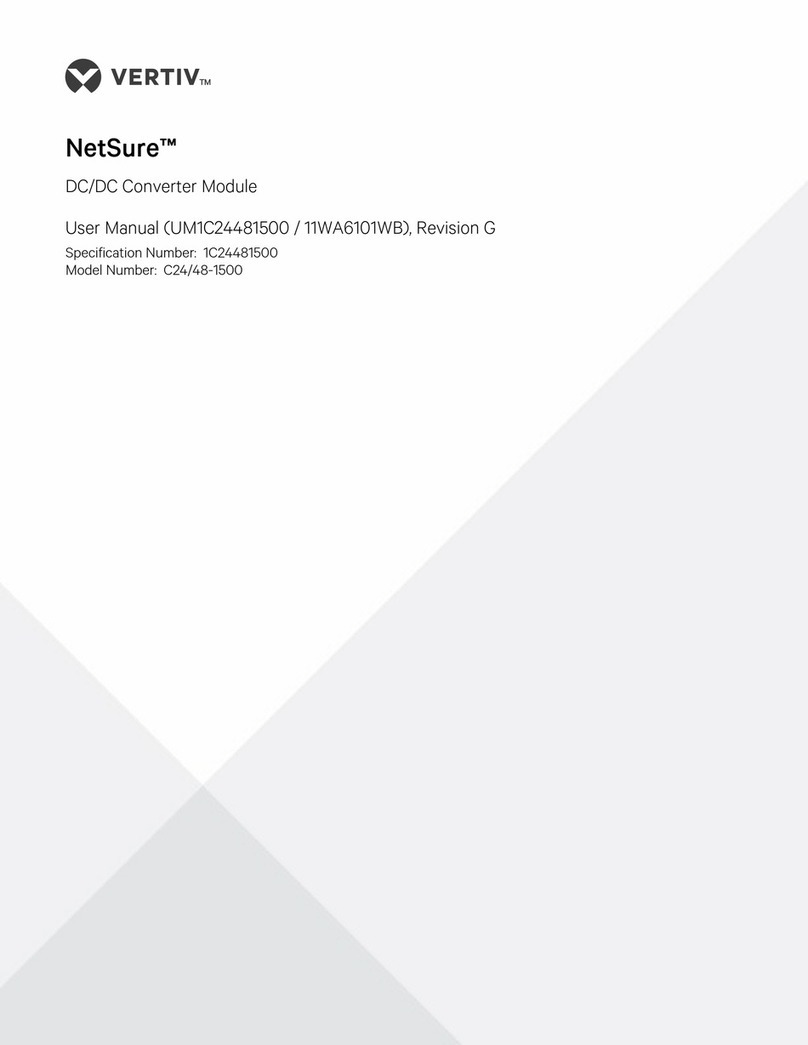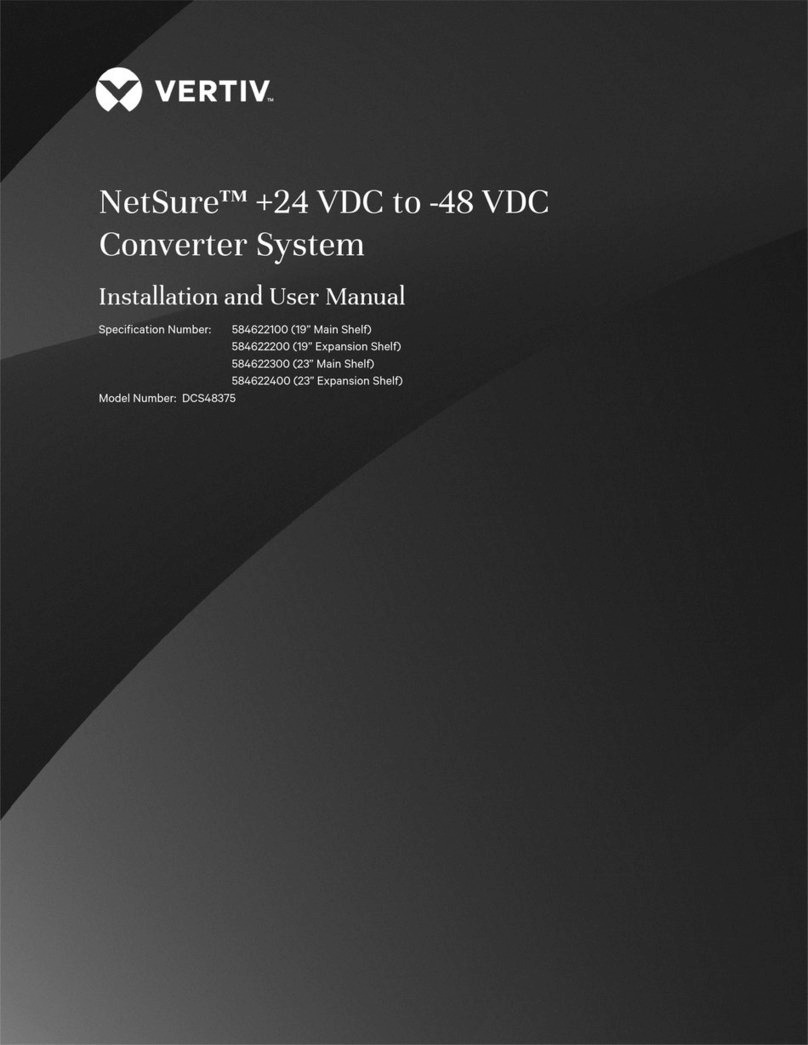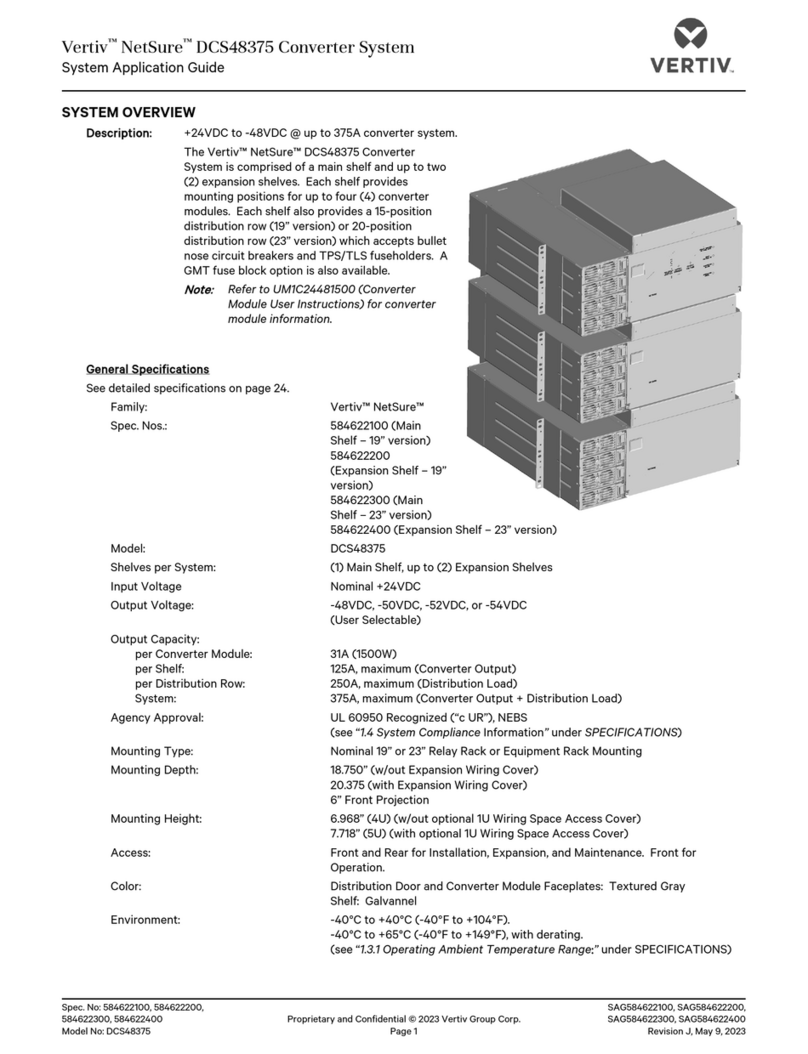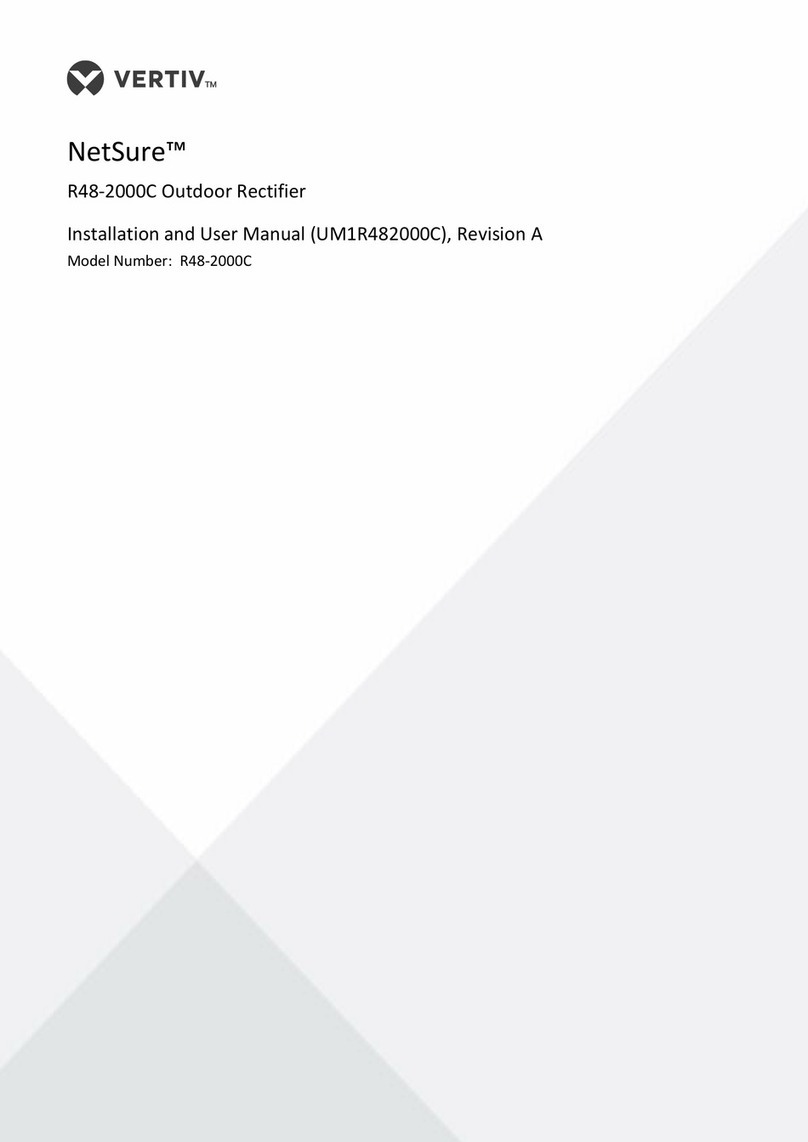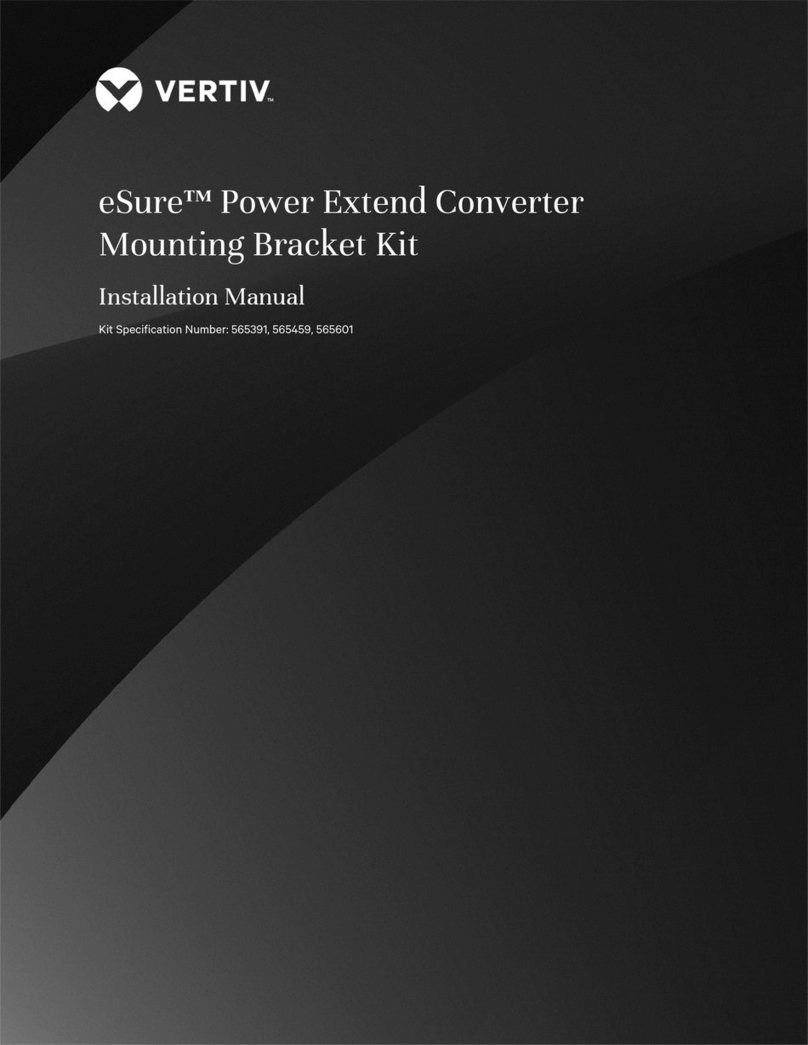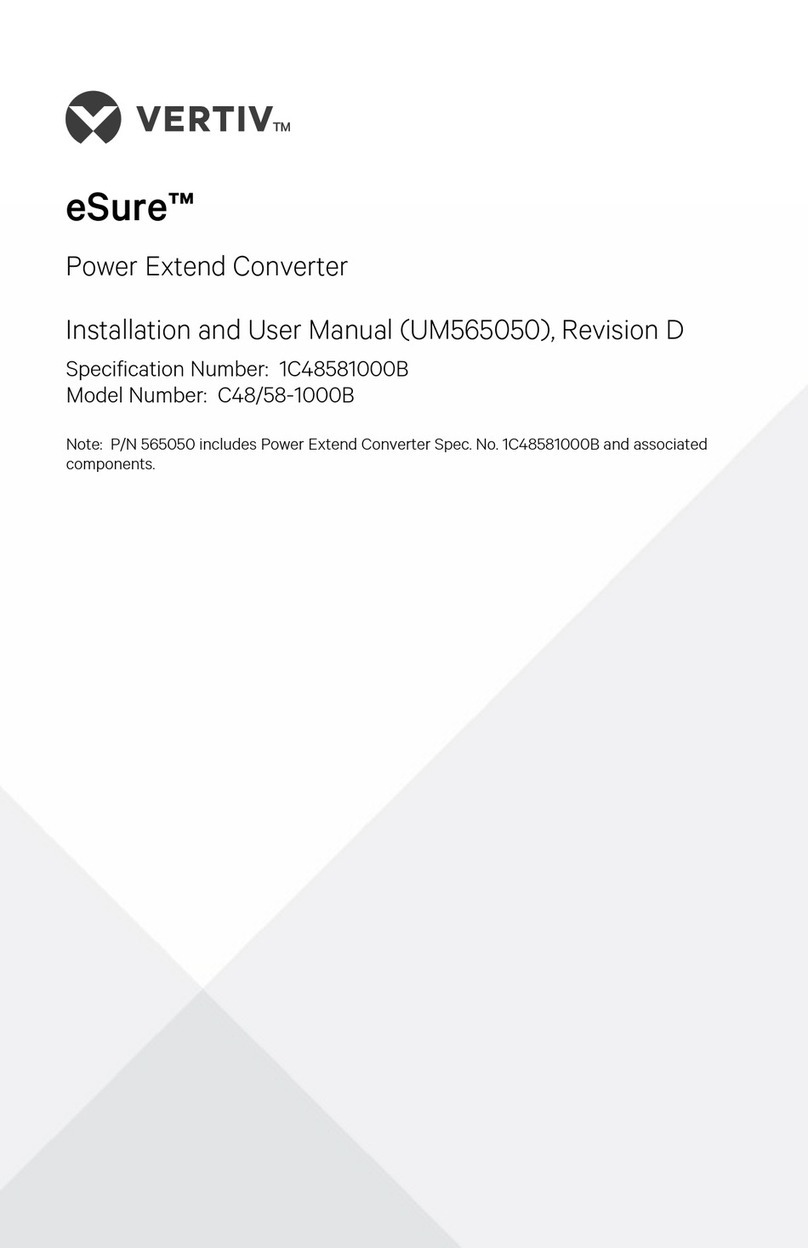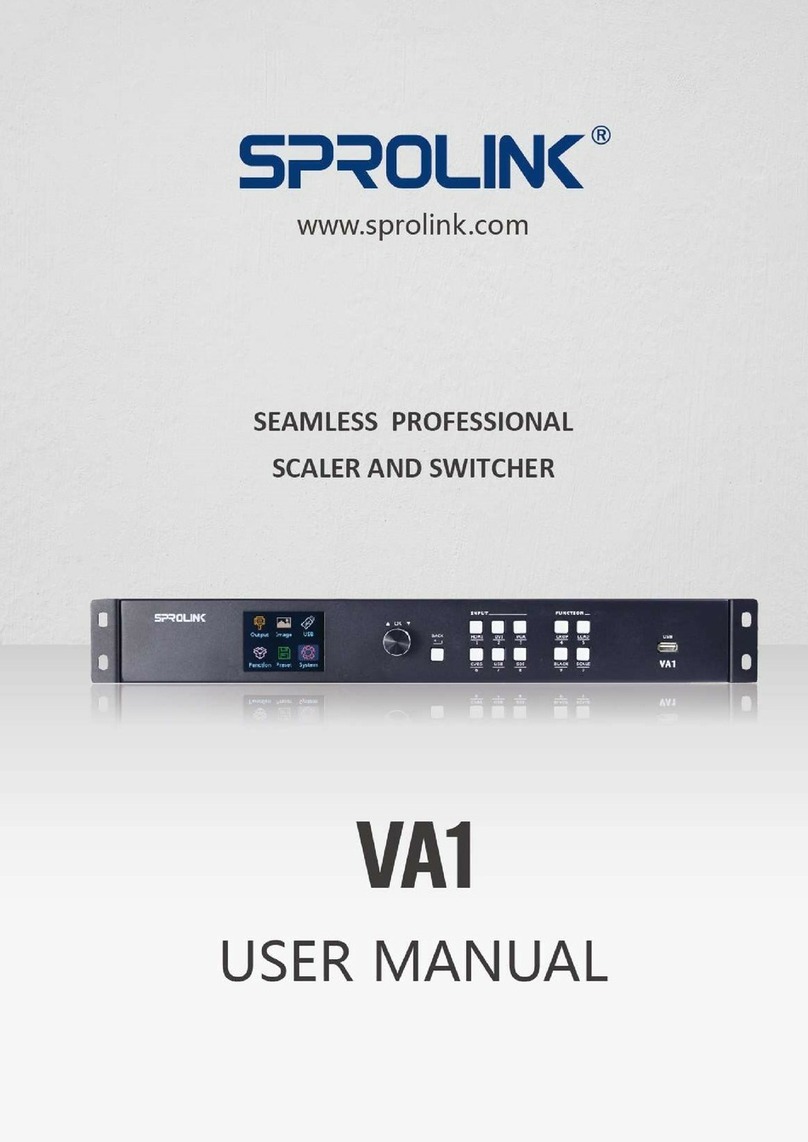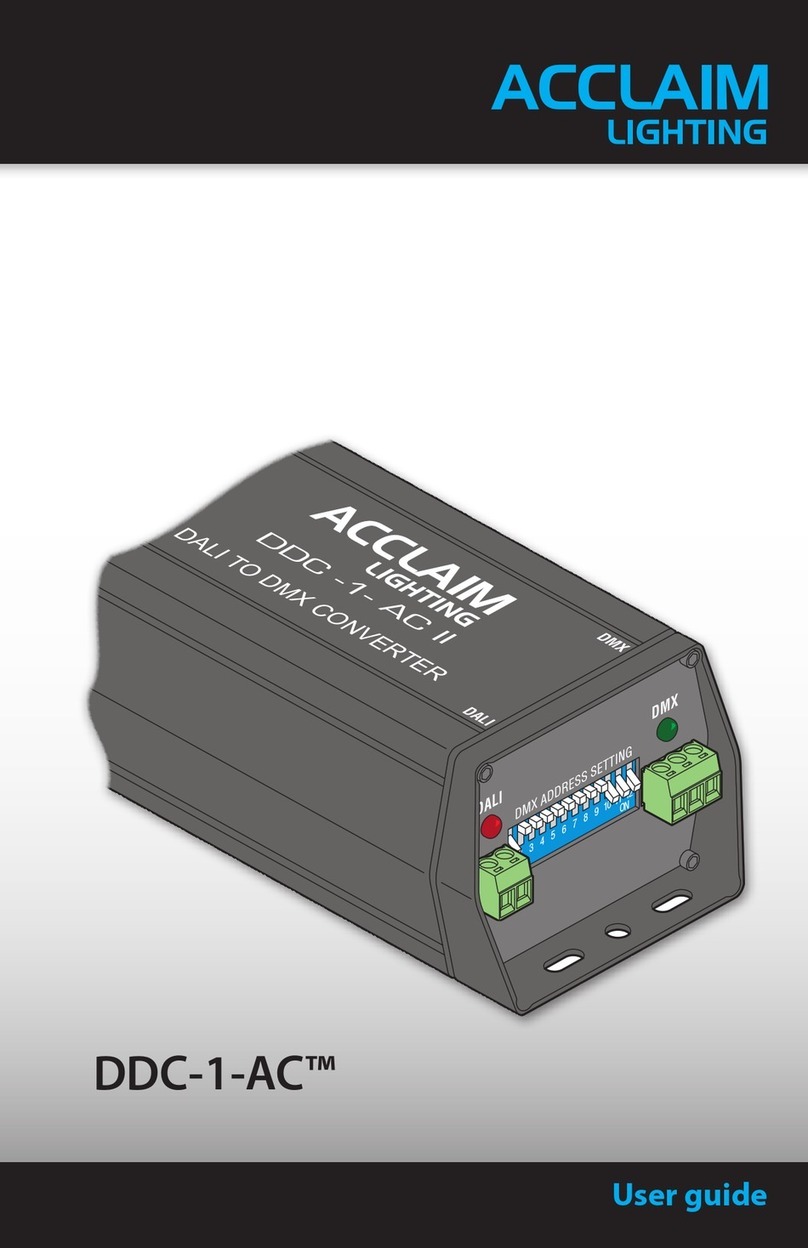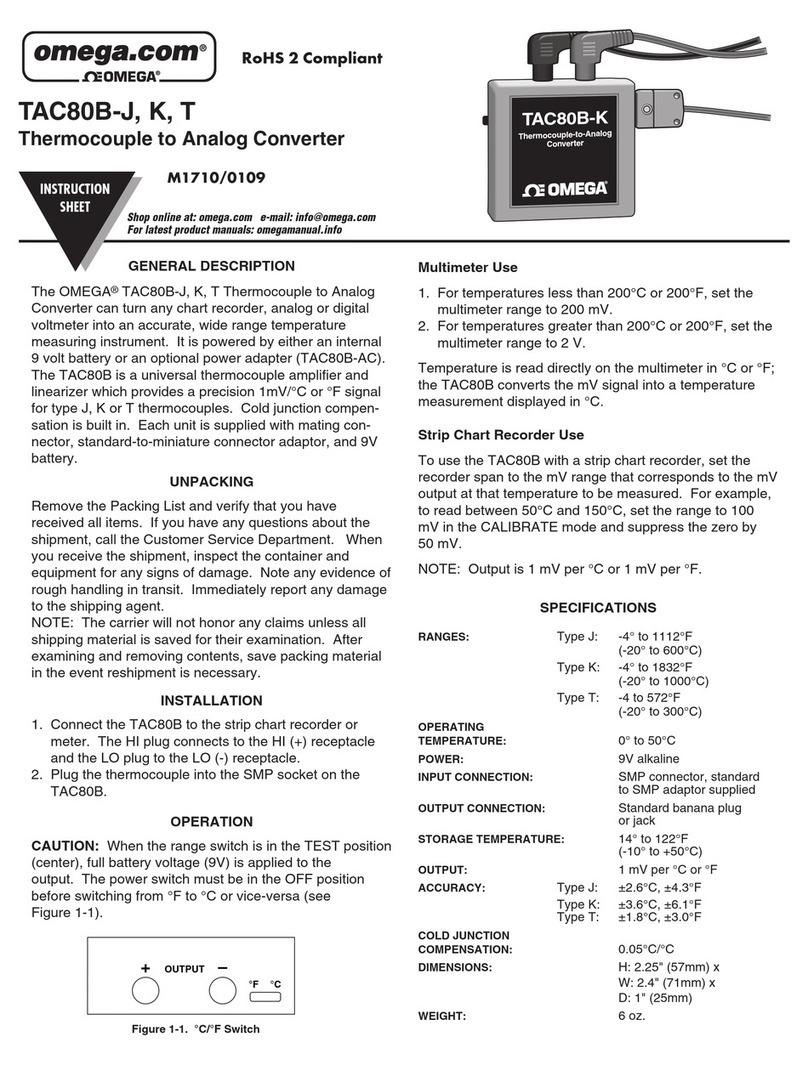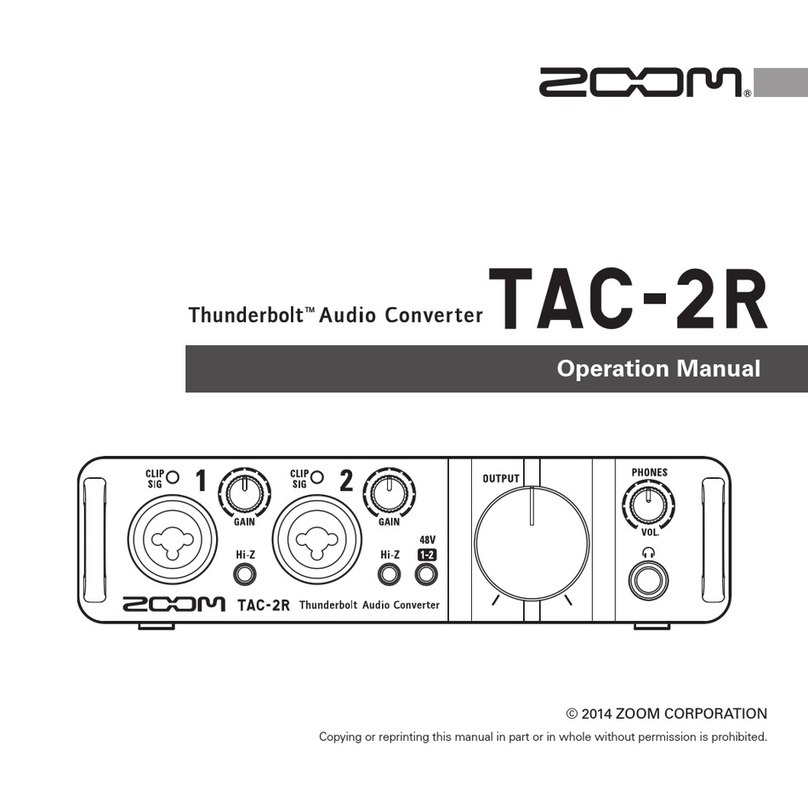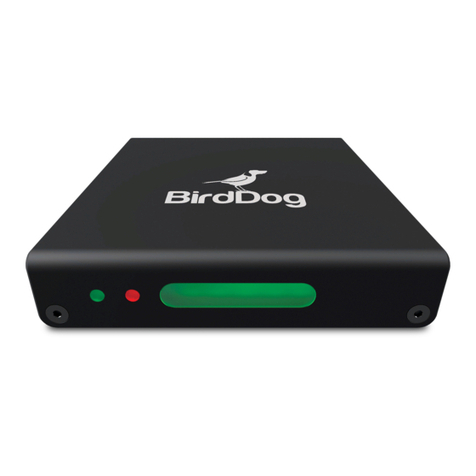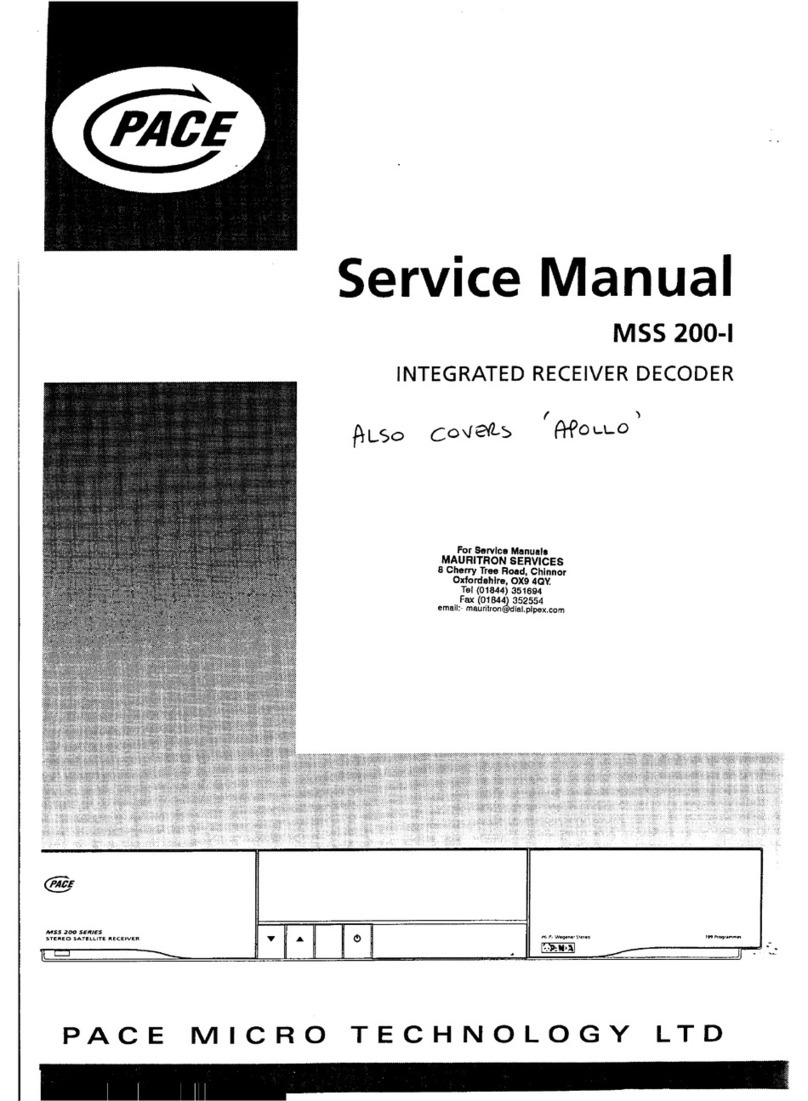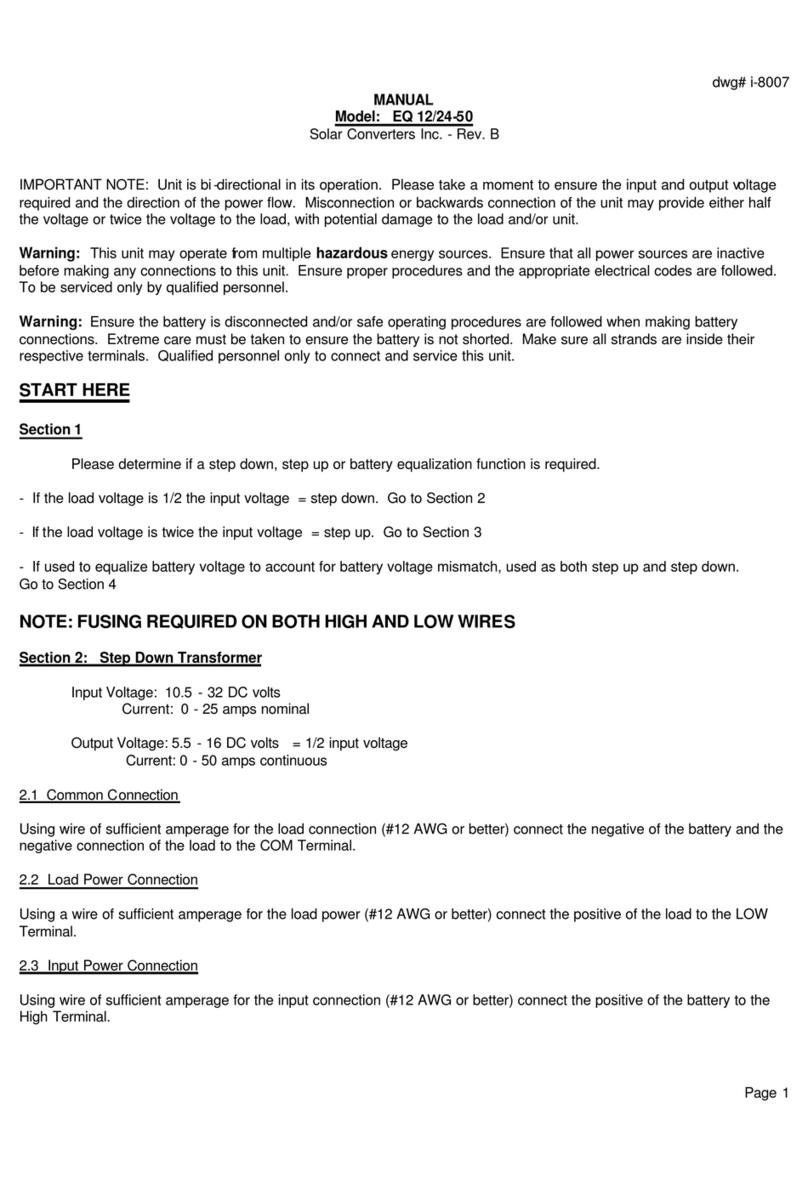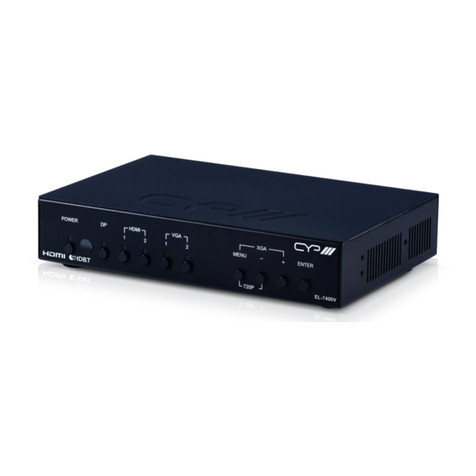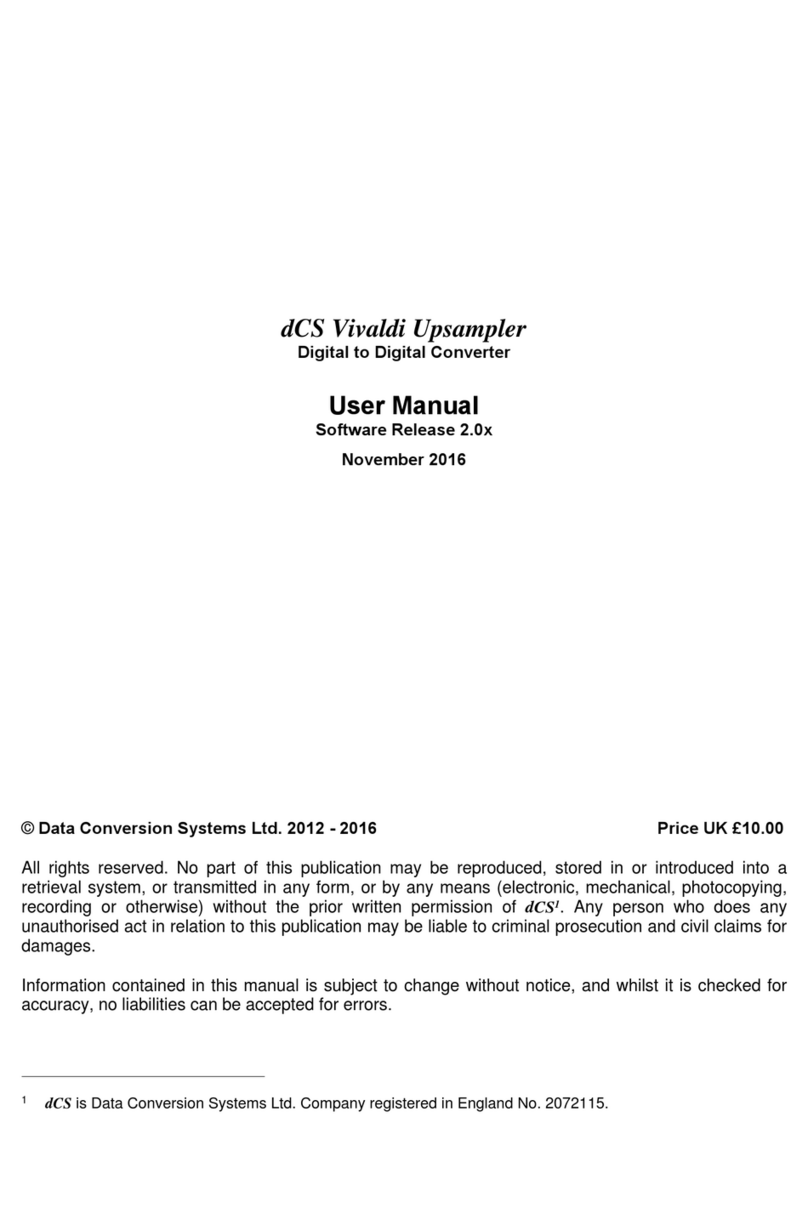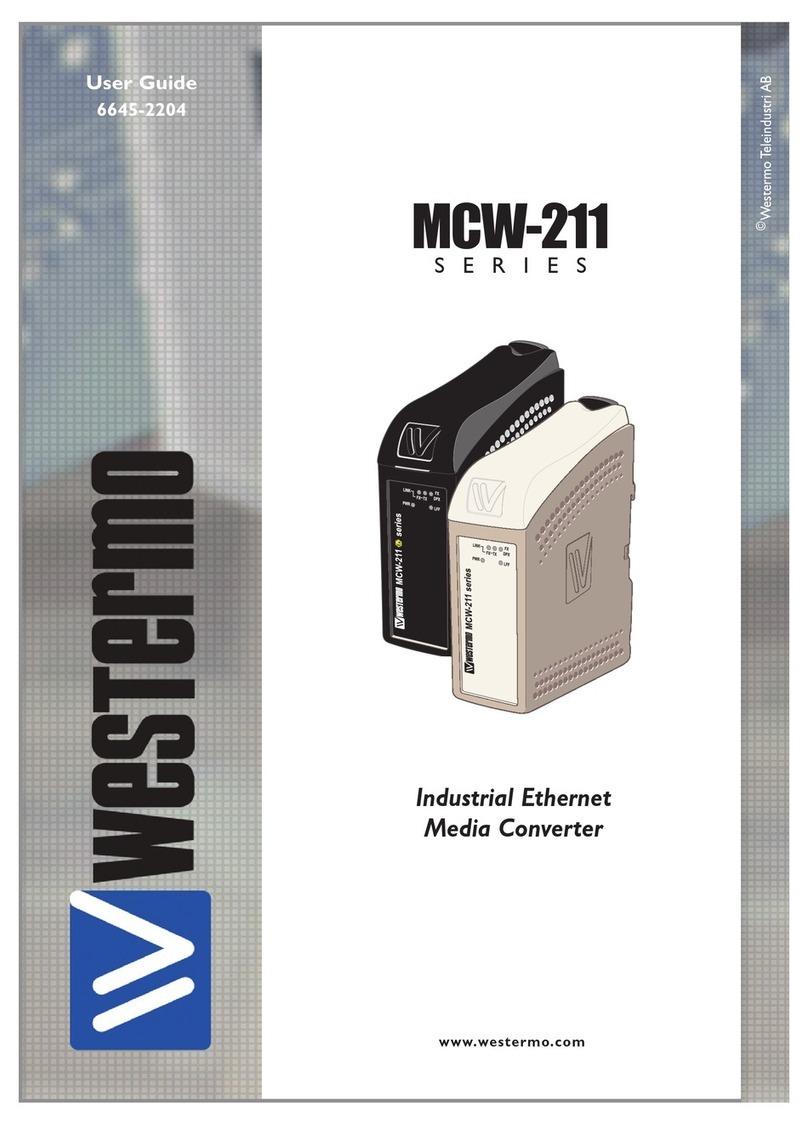
Vertiv™ NetSure™ IPE Series -48 VDC Outdoor Rectifier Installation and User Manual
TABLE OF CONTENTS
Admonishments Used in this Document.......................................................................................................................... v
Important Safety Instructions ............................................................................................................................................ vi
Static Warning ....................................................................................................................................................................... viii
1Introduction ......................................................................................................................................................................... 1
1.1 General 1
1.2 Packing List.........................................................................................................................................................................................................................................................................1
1.2.1 1R482000C2-4 Packing List.........................................................................................................................................................................................................1
1.2.2 1R482000C2-5 Packing List........................................................................................................................................................................................................2
1.3 Accessories.........................................................................................................................................................................................................................................................................2
1.3.1 Customer Wiring Selection............................................................................................................................................................................................................2
1.4 Rectifier Overview ........................................................................................................................................................................................................................................................3
1.5 Rectifier Specifications............................................................................................................................................................................................................................................3
1.5.1 DC Output Ratings................................................................................................................................................................................................................................3
1.5.2 AC Input Ratings.....................................................................................................................................................................................................................................5
1.5.3 Environmental Ratings ......................................................................................................................................................................................................................8
1.5.4 Digital Output (DO) Dry Relay Contacts .......................................................................................................................................................................10
1.5.5 Compliance
I
nforma
t
ion
................................................................................................................................................................................................................11
1.5.6 Standard Features...............................................................................................................................................................................................................................11
1.5.7 Mechanical Specifications............................................................................................................................................................................................................12
2Installation..........................................................................................................................................................................12
2.1 General 12
2.2 Tools Required for Installation........................................................................................................................................................................................................................12
2.3 Mounting Kits .................................................................................................................................................................................................................................................................13
2.3.1 Standard Mounting Kit for Single Rectifier Installation.....................................................................................................................................13
2.4 Mounting the Rectifier to a Pole or Wall Using the Standard Rectifier Mounting Kit................................................................................14
2.4.1 General..........................................................................................................................................................................................................................................................14
2.4.2 Pole Mounting Procedure............................................................................................................................................................................................................14
2.4.3 Wall Mounting Procedure............................................................................................................................................................................................................18
2.4.4 Lashing of Cords and Cables.....................................................................................................................................................................................................21
3Making Electrical Connections ................................................................................................................................... 22
3.1 Important Safety Instructions.........................................................................................................................................................................................................................22
3.2 Wiring Considerations............................................................................................................................................................................................................................................22
3.3 Rectifier Interface Overview Diagrams ..................................................................................................................................................................................................22
3.4 Rectifier Ground Connection .........................................................................................................................................................................................................................24
3.4.1 General.........................................................................................................................................................................................................................................................24
3.4.2 Positive Grounding............................................................................................................................................................................................................................24
3.4.3 Chassis Grounding ............................................................................................................................................................................................................................24
3.5 Terminal List...................................................................................................................................................................................................................................................................25
3.5.1 PG Version.................................................................................................................................................................................................................................................25
3.5.2 Quick Connect Version..................................................................................................................................................................................................................25
3.6 Customer Wiring Selection ...............................................................................................................................................................................................................................25
3.7 Digital Output (DO) Relay Functions ......................................................................................................................................................................................................26
3.8 Changing the Alarm Relay Configuration for the Digital Output (DO) Relay Functions.........................................................................26
3.9 Wire Preparation.........................................................................................................................................................................................................................................................26
3.10 Customer Wiring Connection Procedure.............................................................................................................................................................................................28
3.10.1 Customer Wiring Connection Procedure for PG Terminal...........................................................................................................................28
